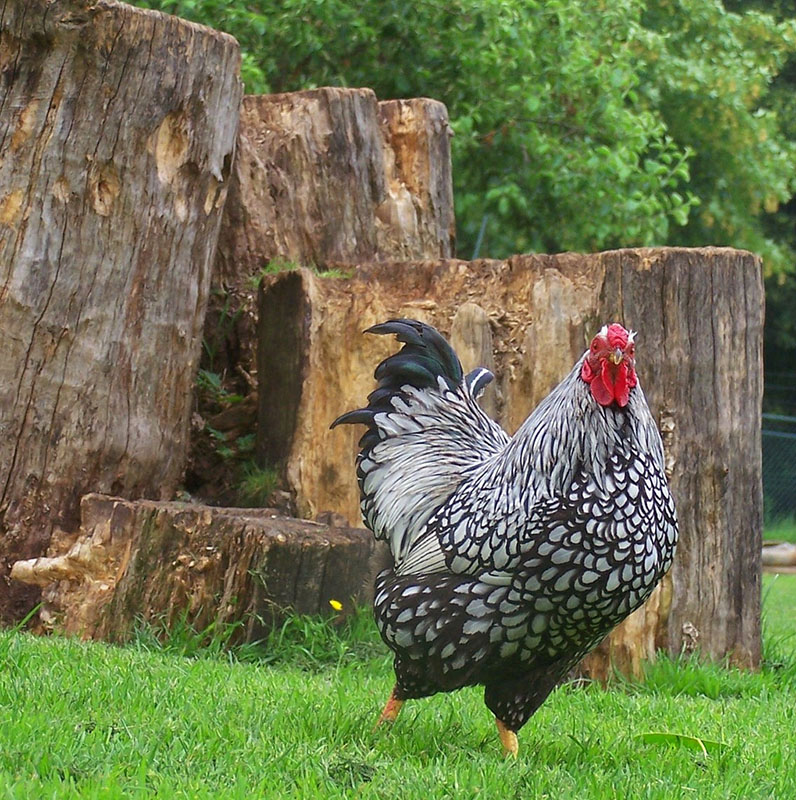Wyandotte Chickens
 The Wyandotte comes from the regions around upstate New York and Ontario, Canada.
It was originally named American Sebright, however, it was later changed to Wyandotte
after a Native American tribe that lived in those parts. It is believed to have been
developed around the 19th century. It was recognized by the APA in 1883. The Silver
Laced variety was developed in New York State and the others in the north and northeastern
states in the latter part of the 19th century and early 20th century.
The Wyandotte comes from the regions around upstate New York and Ontario, Canada.
It was originally named American Sebright, however, it was later changed to Wyandotte
after a Native American tribe that lived in those parts. It is believed to have been
developed around the 19th century. It was recognized by the APA in 1883. The Silver
Laced variety was developed in New York State and the others in the north and northeastern
states in the latter part of the 19th century and early 20th century.
Characteristics
Wyandottes are a good, medium-weight fowl for small family flocks kept under rugged conditions. Their rose combs do not freeze as easily as single combs and the hens make good mothers. Their attractive "curvy" shape, generally good disposition, and many attractive color patterns (varieties) make them a good choice for fanciers as well as farmers. Common faults include narrow backs, undersized individuals and relatively poor hatches. In addition, it is not uncommon to see single combed offspring come from rose combed parents. These single combed descendents of Wyandottes should not be kept as breeders.
Standard Weights
Cock: 8.5 lbs
Hen: 6.5 lbs
Cockerel: 7.5 lbs
Pullet: 5.5 lbs
Varieties
- White
- Buff
- Columbian
- Golden Laced
- Blue
- Silver Laced
- Silver-Penciled
- Partridge
- Black
Skin Color
Yellow.
Egg Shell Color
Brown.
Use
The Wyandotte is a dual-purpose breed for eggs and meat.
References
Chicken Breeds and Varieties (A2880), John L. Skinner, University of Wisconsin-Madison
Lewis, Celia. "Breed Profiles: Wyandotte." The Illustrated Guide to Chickens: How to Choose Them, How to Keep Them. New York: Skyhorse Pub., 2011. 174-75. Print.
"Wyandotte Chicken." The Livestock Conservancy. The Livestock Conservancy, n.d. Web. 08 July 2015.
